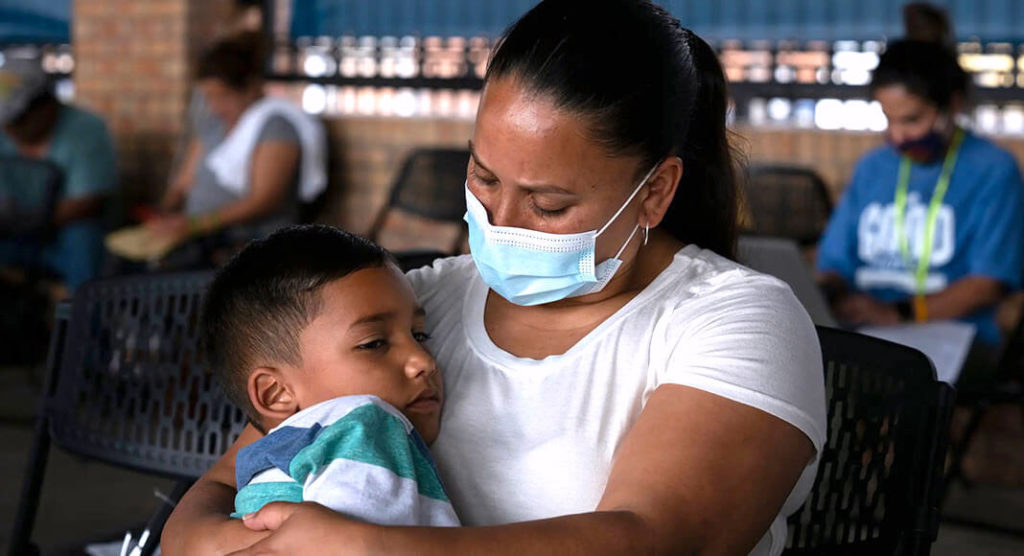
By Lomi Kriel, The Texas Tribune and ProPublica
May 13, 2021
This article is co-published with ProPublica, a nonprofit newsroom that investigates abuses of power. Sign up for ProPublica’s Big Story newsletter to receive stories like this one in your inbox as soon as they are published.
No matter how hard he tried, Jonatan Garcia said, he couldn’t find steady work in Guatemala. He dabbled in construction, and on some days picked beans, after losing his sales job at a TV station a few weeks after the pandemic shuttered businesses and further stifled employment in his country.
Desperation quickly mounted for Garcia. He struggled to make enough money to provide food for his wife and two small children, and they faced eviction from the three-room house they rented in the mostly indigenous and impoverished rural state of Baja Verapaz.
Then, Garcia said, smugglers falsely told him that President Joe Biden had signaled during a television appearance that migrants would be allowed to enter the United States. The new administration has been trying to combat such misinformation as it seeks to rein in the influx of migrants at the southern border of the U.S.
Garcia borrowed nearly $7,000 from a friend and, aided by a smuggler, traveled to Texas with his 6-year-old son. He left behind his wife and baby while he searched for stable employment.
Garcia and his son were among a record-setting number of migrants who were detained while attempting to enter the country at the U.S.-Mexico border in March and April under confounding policies that have turned the immigration process into a game of roulette. While not rising as rapidly as they had in the months immediately previous, border detentions reached a 21-year high after increasing again in April, according to federal statistics released this week.
Because of a lack of uniform policies and uneven enforcement of some laws in the U.S. and Mexico, migrants can be granted or denied entrance into the country based on a variety of factors, including where they cross and the age of their children. Smugglers have exploited the confusion to manipulate vulnerable migrants into making the journey north, adding to the sustained influx at the border, experts said.
Migrants were taken into custody by U.S. Customs and Border Protection a total of 178,622 times in April. The data includes migrants who have previously crossed. Nearly 67,000 individuals, mostly those crossing with their families and unaccompanied children, were allowed to stay in the U.S. while they seek protection from deportation. The remainder, largely single adults, were summarily turned away under a health order instituted by former President Donald Trump and continued under Biden that denies entrance to the country during the coronavirus pandemic.
In his first presidential address to Congress last month, Biden said the U.S. must contend with the root causes of migration that force people to flee their countries, including persistent violence, poor economic conditions aggravated by the pandemic and two hurricanes that pummeled Central America last year.
But the deteriorating circumstances in that region, combined with disparate U.S. immigration policies, have created a chaotic situation at the border that is worsened by the perception of mixed messaging from the Biden administration, said Andrew Selee, president of the Migration Policy Institute, a Washington, D.C., think tank.
“Messages matter, perceptions matter, but the sudden spike on the ground is because people hear others are getting in,” Selee said. He added, “Many people wait until they see there is some proof that you can actually cross the border, even if it is tentative.”
The Biden administration has ramped up Spanish-language media campaigns in Central America that urge migrants to stay in their home countries as it seeks to repair what officials have called a fractured U.S. asylum system.
But such public messages are muddled by Biden reversing some of Trump’s immigration policies while maintaining others, according to experts who said that at times they too struggle to make sense of who gets into the country and who doesn’t. Below is a breakdown of how some of those policies and decisions have played out for Garcia and hundreds of thousands of migrants arriving at the border.















